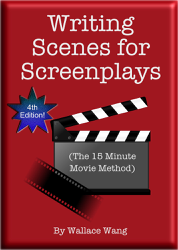Read this article about “The Shawshank Redemption”, a movie that initially bombed at the box office but has since grown in status as one of the greatest movies ever made. Two key ingredients that made “The Shawshank Redemption” such a great movie are:
- Characters we care about
- An emotional experience
Think of the last mediocre movie you watched (such as “Borderlands”, “The 355”, or “Mortal Engines”) and you’ll notice that if you don’t care about any of the main characters, you won’t care about the rest of the story either. Instead of making us care about the story’s characters, far too many Hollywood box office bombs try to stimulate us with more action, sex, special effects, explosions, and car crashes.
It never works.
Never.
Yet Hollywood keeps churning out bad movies that keep trying to follow this guaranteed formula for failure. There are two keys to making us care about characters. First, make sure your hero has an internal problem they must overcome. Seeing the hero overcome a character flaw creates an emotionally satisfying story. “Die Hard” looks like a pure action thriller but there’s a key moment when John McClane pulls glass shards out of his bare feet and admits to Officer Powell that his own arrogance broke up his relationship with his wife.
Eliminate this key emotional moment and you wind up with pure action and no emotion like most of the “Die Hard” sequels and “Die Hard” clones that Hollywood churned out.
Every great story is about a hero overcoming a character flaw and triumphing in the end. In “Little Miss Sunshine”, Olive, the hero, must deal with her fear of being a loser if she doesn’t win the beauty pageant. Her big emotional moment occurs when given a choice between giving up or risking going on stage, Olive decides to go on stage and compete despite her family urging her not to do it.
In “Lars and the Real Girl”, Lars, the hero, is terrified of getting close to people, based on his mother dying when he was born. Therefore his huge emotional moment occurs when he finally reaches out to a girl he likes and asks if she’d like to go for a walk with him. This may not seem like a major emotional moment for most people, but for Lars, it’s a huge achievement.
By letting us cheer for a flawed character, stories make us feel good about ourselves as well. However, one further step is that audiences should see themselves in the story’s hero. Few people can relate to fighting for the heavyweight championship of the world as a boxer like in “Rocky”, but everyone can relate to feeling like an underdog and struggling to prove otherwise to themselves and the world that they’re not a failure.
In “The Shawshank Redemption”, most people can’t relate to being stuck in prison like the hero is, but they can relate to the feeling of despair and the desire to hope for a better life like Andy, the hero in “The Shawshank Redemption” does.
So give us flawed characters who learn from their adventures throughout the story. Then make sure we, as the audience, can relate to the emotional ups and downs that the hero goes through. We may never understand what it’s like to be imprisoned like in “The Shawshank Redemption”, but we can always understand what it’s like to dream about a better life.
The more we can relate to your hero, the stronger your story will be. The more dramatically your hero changes, the stronger that emotional connection will be between the audience and your hero, and that’s what will make a great story.
Sign up to take a FREE course about how to write scenes in a screenplay.

